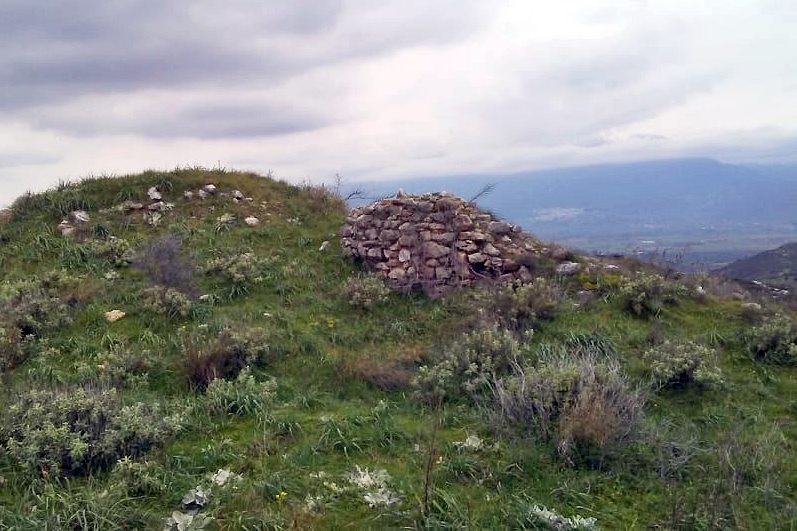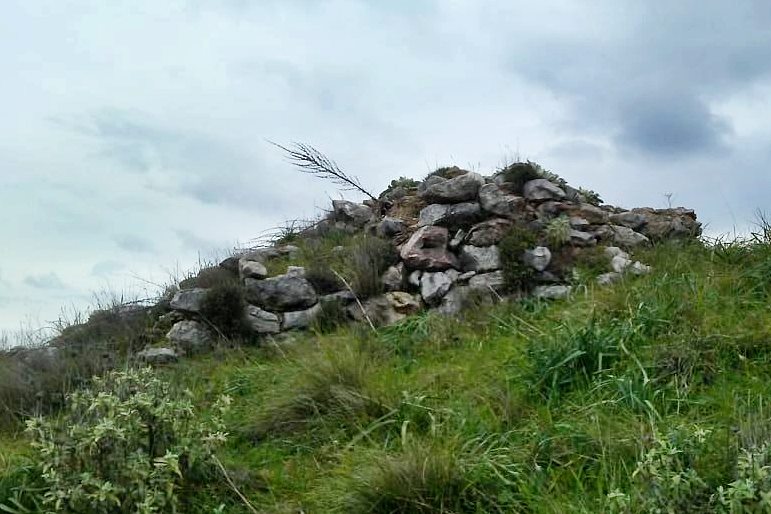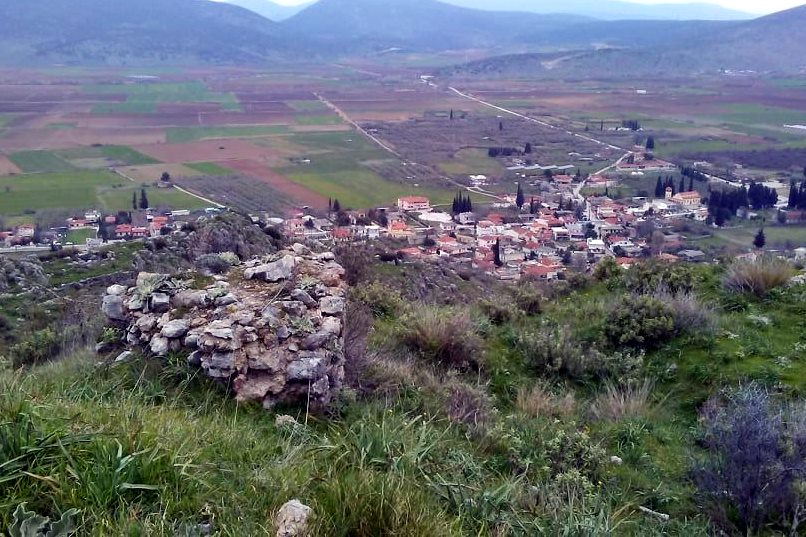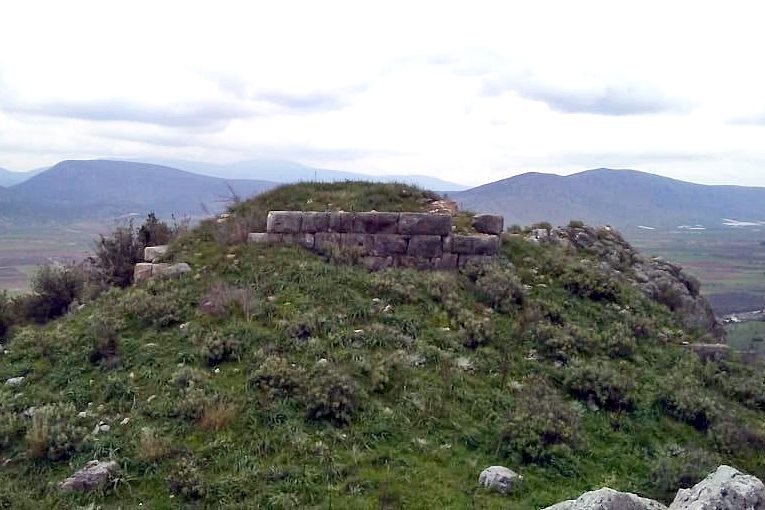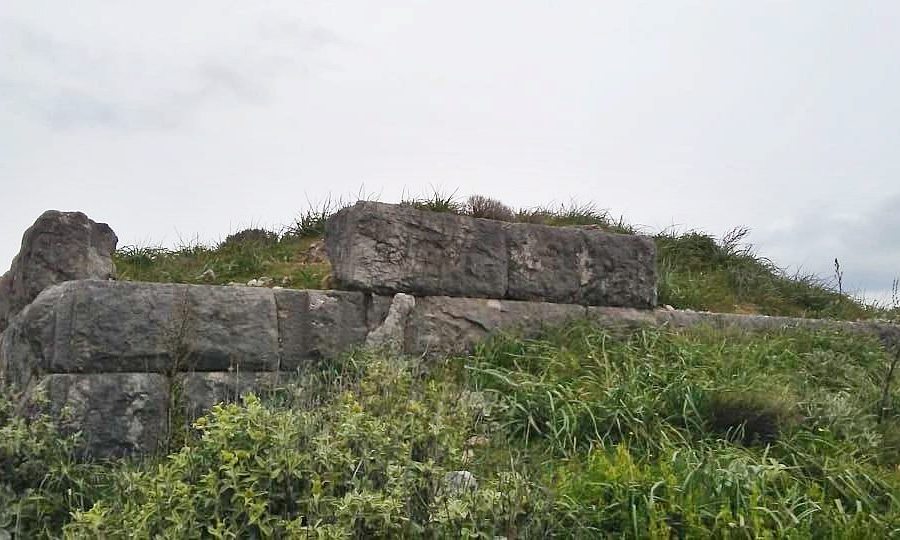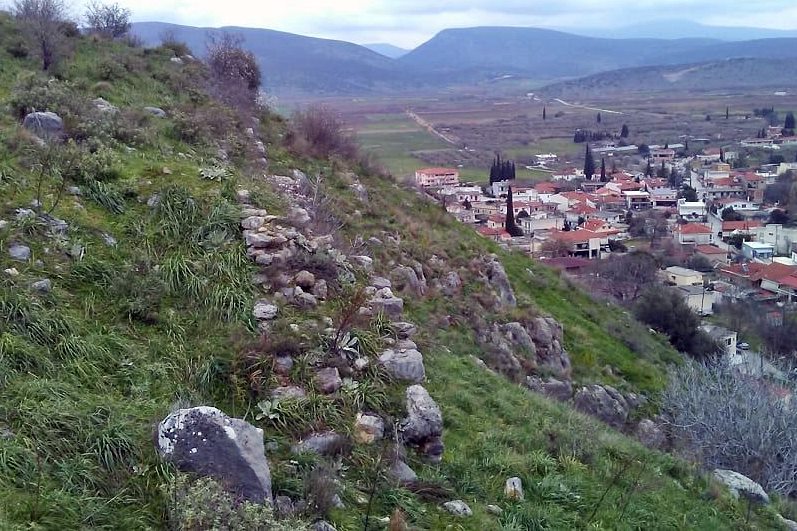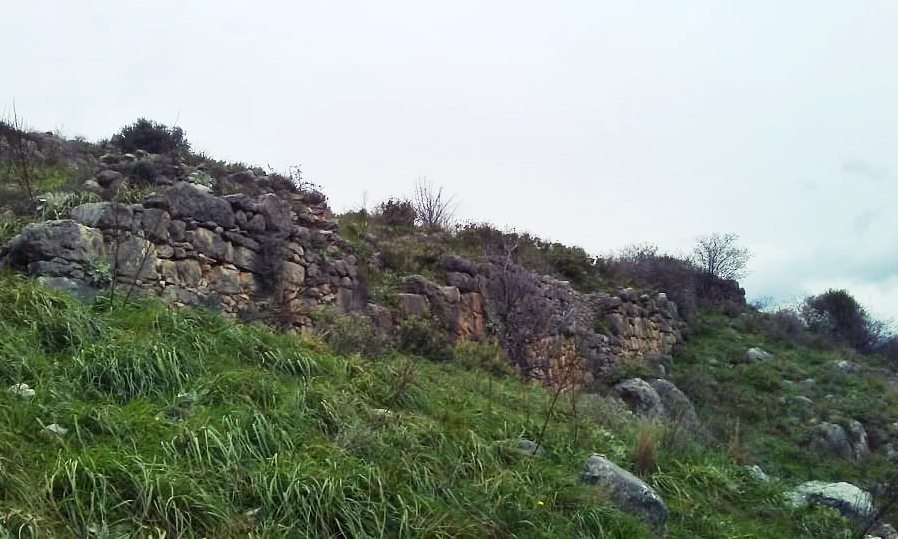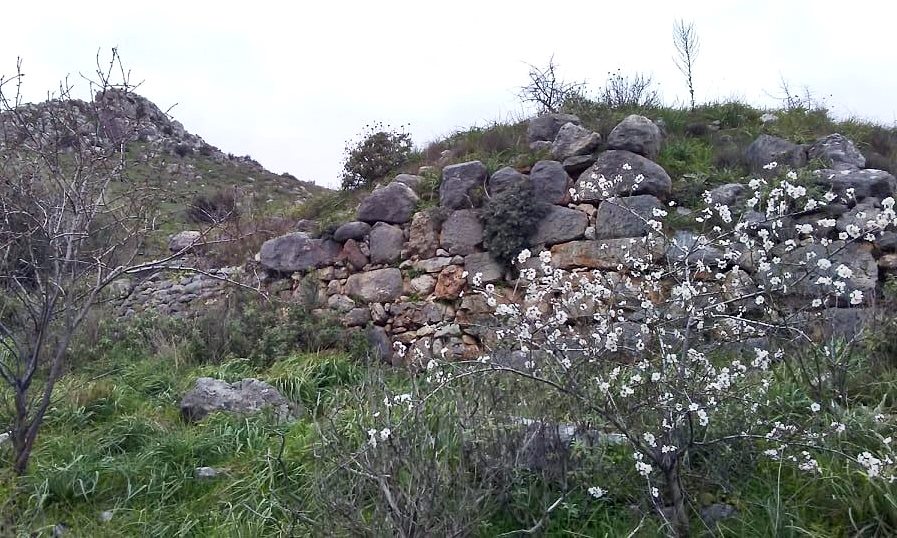Chaeronea, Livadeia, Boeotia,Central Greece
Castle of Capraina
| Location: |
| On the hill above and west of the village Chaeronea in Boeotia |
| Region > Prefecture: | 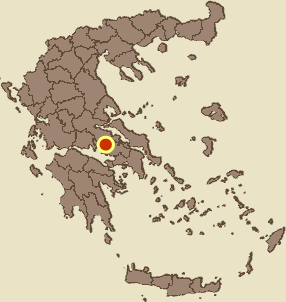 |
| Central Greece Boeotia | |
| Municipality > Town: | |
| City of Livadeia • Chaeronea | |
| Altitude: | |
|
Elevation ≈ 230 m (Relative Height≈90 m) |
| Time of Construction | Origin | |
| Various periods | ANCIENT |
|
| Castle Type | Condition | |
| Castle Ruins |
In Ruins
|
Ruins of a castle on the elongated hill above Chaeronia, Boeotia. This is the ancient citadel of Chaeronia, which apparently (judging from the additions in the masonry and the tower) was used during the Middle Ages without ever becoming an important castle.
The old name of Chaeronia, until 1928, was “Capraina” which was the medieval name of the village. The origin of this name is etymologically connected with the word Caprus which means wild boar.
History
Ancient Chaeronia was an important city-state of Boeotia. The most important figure in its history was the historian Plutarch (1st century AD) who, in addition to his writing, was also the high priest of Apollo in the Oracle of Delphi for 29 years and also, at an advanced age, was appointed by the Romans lord of Achaia.
We do not know much about the history of medieval Chaeronia. There was obviously a Frankish fief, but it is very likely that the acropolis was in use as a fortress since the Byzantine period.
The only information available from a historical source is a document from 1380-1381 which mentions a certain Pere de Bellestar as lord of Caprena (La Cabrena) and Patricio (who has been identified with the village of Ypsilantis, where there is a Frankish tower).
This feudal lord, Peter of Bellestar, was probably a Catalan.
Structure, Fortification & Buildings
The ancient citadel is built on five successive peaks of Petrachos hill, starting from the rock of the ancient theater, west of the village, and continuing in an almost straight line to the highest point of the hill.
The ancient walls are clearly visible on two of the hilltops. In the highest of the two there are the ruins of a square ancient tower which has received medieval modifications; obviously this was the keep (Donjon) of the medieval castle.
The entrance was located on the eastern slope of the hill, the smoothest, which is protected by a strong medieval wall, built of semi-processed stones, which are fastened with ceramic fragments and mortar. The medieval wall in some places exceeds 5 meters in height. The wall in some places is one meter wide and in another two meters (depending on the construction period, obviously).
The ancient wall is constructed in the isodomic style with processed gray-black stones measuring 1.30m✖1.00m✖0.60m.
| First entry in Kastrologos: | March 2022 |
Sources
- Presentation and photographs by Ioannis Dedes (March 2022)
|
|
| Access |
|---|
| Approach to the monument: |
| The ascend to the hill is rather difficult; the east side is accessible with some climbing effort. |
| Entrance: |
| Free access |



